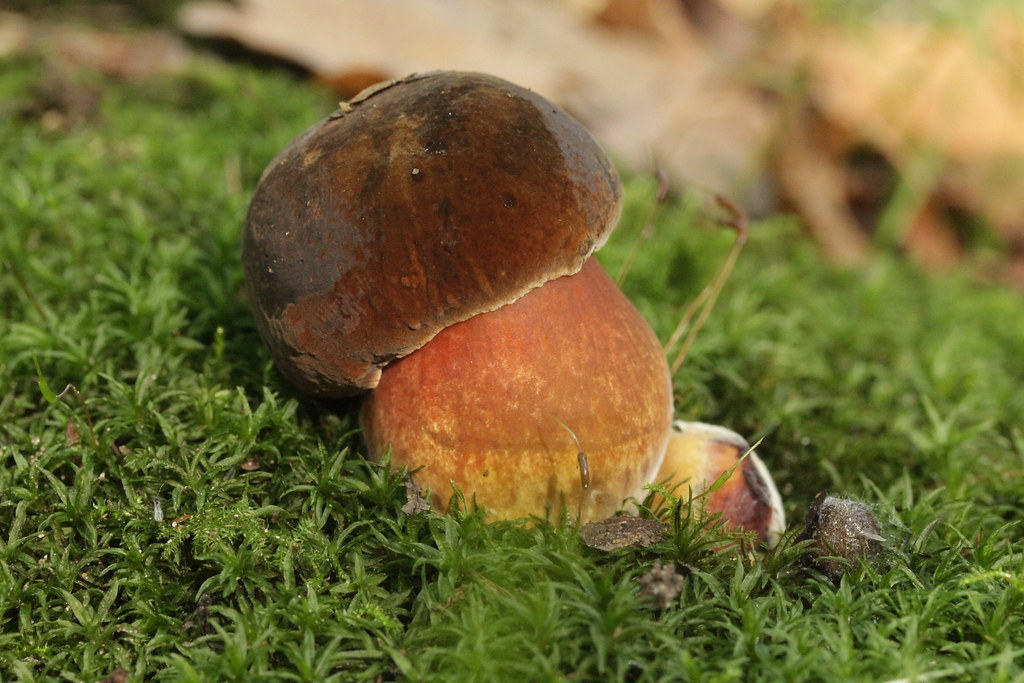#food science
Text




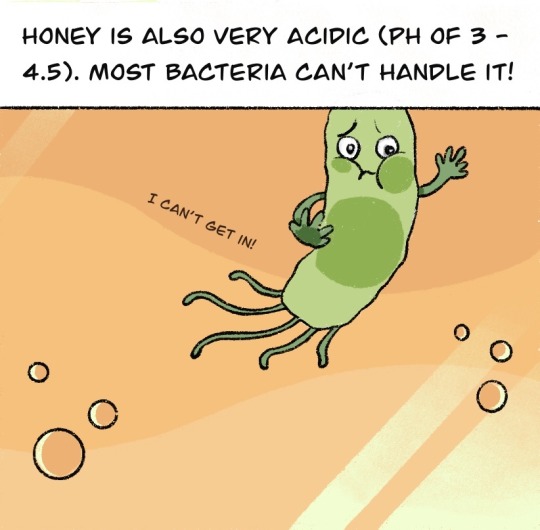
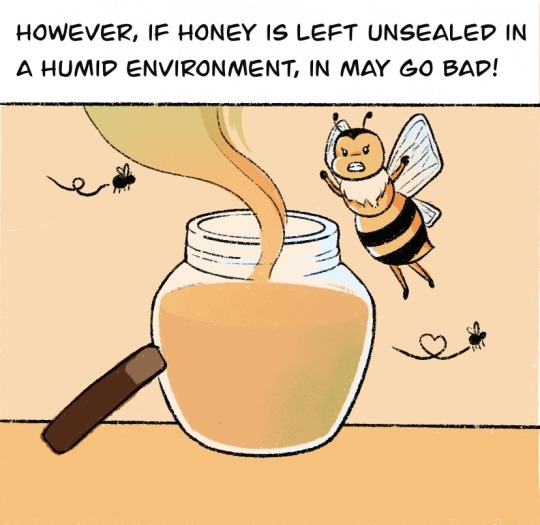

Do you know that a 3000-year-old honey was still edible? Does honey ever spoil?
#sciart#cute illustration#studyblr#sciencecommunication#biochemistry#stem education#chemistry#science#chemistry in real life#biology#food science#comics#cute comics
764 notes
·
View notes
Text

330 notes
·
View notes
Text

#vanilla#food#rabbit hole#old book smell#topsoil#wood spirits#paper mills#slavery#orchids#plants#biochemistry#food science#meme#free range sustainable shitpost#troglodyte thoughts#like seriously this has been the best wikiwalk ever
340 notes
·
View notes
Text
For all of human history, eating meat has meant slaughtering animals. But scientists behind cultivated meat say that's no longer necessary. They produce meat by growing cells extracted from an animal's body. And, today, the U.S. Department of Agriculture gave its first clearances to sell meat produced this way.
GOOD Meat, a division of Eat Just, Inc., announced that it has received approval from the USDA for its first poultry product, cultivated chicken, grown directly from animal cells, to be sold in the U.S.
"This announcement that we're now able to produce and sell cultivated meat in the United States is a major moment for our company, the industry and the food system, " said Josh Tetrick, co-founder and CEO of GOOD Meat and Eat Just.
Continue Reading.
344 notes
·
View notes
Text
So i was thinking about the whole solarpunk chobani oatmilk ad (as depicted here) and a comment someone made in a different post (that I now can't find) where they said something along the lines of (paraphrasing) 'the marketing people at chobani being unable to imagine a future where their brand had ditched single-use containers in favor of a sustainable alternative'. And I started thinking how will food packaging look like in the solarpunk utopia?
Modern food packaging responds (mostly) to the needs of the globalized supply chain, where food products need to be moved great distances without being damaged and while taking up as little space and energy as possible. Packaging also needs to be made of the cheapest materials available, hence the preference for disposable containers made of light materials (cardboard, plastic, aluminium, paper, etc.). You don't want your package to be worth more than what it contains (although with some food products, that is close to being the case).
The comment I referenced earlier suggested using reusable glass containers as an example of a sustainable alternative to single-use containers. That makes sense, and there is historical (and current) precedent for such kinds of food containers. Just ask your parents (or grandparents, I guess) how milk used to be delivered to homes in the good ol' days.
In a more recent example, some places still use reusable (returnable) containers for products such as beer and (even!) Coca-cola, where you pay an initial fee for the container and get reimbursed once you return it, or you can exchange the empty container for a full one by paying the price of the product minus the container fee.
This solution, however, is still within the framework of the global supply chain of modern capitalism. In the solarpunk utopia, the goal would be to reduce (reuse, repair, recycle) the breadth of our current supply chain by prioritizing local consumption and disinsentivizing long-distance trade.
This train of thought led me to the question of wether processed, pre-packaged food would even be a thing in the solarpunk utopia. After all, if we are trying to consume only what is locally sourced, one of the main purposes of preserved (and thus packaged) food goes away. No need for bottled orange juice when you can just go to the commons bin and grab a kilo of fresh oranges to make your own.
Further, once there is no capitalism, the "convenience" angle of processed, packaged food also appears to go away. You don't have to work 9 hours a day, 6 days a week anymore. You have the time and resources necessary to make your own damn fresh orange juice, so why bother with the bottled stuff?
Well for one, not everything is as easy and convenient to do by yourself as orange juice. Fermented foods (cheese, wine, beer, soy sauce, even pickles and yogurt), bread and pastries and cakes, carbonated drinks, jams and marmalade, butter, mayonnaise, cured meats and fish, and (yes) almond milk are all tricky to make properly, take a long time to be made and/or are energy and resource intensive. The need for these kinds of foods will remain as long as we are human and find pleasure in eating and trying new things. Also, the need for mass-produced food does not go away with capitalism, after all we have a population of 10 billion humans with different dietary needs that need to be fed. Food safety standards must still be enforced and probably will be even more stringent when corporate profits are no longer standing in the way of progress.
To add to this, a localized supply chain will make food preservation even more important. After all, if you want your population to survive mostly on what can be produced in a 100 km radius, you will have to prepare for food scarcity. Droughts, floods, earthquakes, blizzards, accidents, and even just regular ol' winter (once we've rescued it from the clutches of climate change) don't care how solar your punk is. They will wreck your food supply and your utopia needs to be ready.
So the need for packaged food will remain. The need for food that can stay in a cupboard undisturbed for months (if not years) and remain edible (and reasonably palatable!) will continue to be there.
With all this in mind... what does food packaging look in our solarpunk utopia? Single-use plastics have gone the way of the dodo, as have single-use paper, cardboard, aluminium, glass, and steel. What has replaced them?
I have some ideas, but this post is already ridiculously long, so I'll save them for later. All I'll say for now is I think glass containers are not the way to go. Glass is heavy, fragile, a poor thermal conductor (so heating and cooling processes with glass containers are energy innefficient), and takes up a lot of space. It is also very resource and energy intensive to produce and recycle (so not the most environmentaly friendly in that regard either).
What does a reusable aluminium container look like? That'd be cool I think.
55 notes
·
View notes
Text

Edible electronics are being developed to assist rescue operations and go inside hospital patients
Professor Dario Floreano is a Swiss-Italian roboticist and engineer engaged in a bold research venture: the creation of edible robots and digestible electronics.
However counterintuitive it may seem, combining food science and robotic science could yield enormous benefits. These range from airlifts of food to advanced health monitoring.
Boundary breaking
"Our goal is to start replacing electronic parts by edible components," said Floreano, who is director of the Laboratory of Intelligent Systems at the Swiss Federal Institute of Technology in Lausanne.
Read more.
24 notes
·
View notes
Text
In Europe, Pringles has 34 active flavours in seven can sizes (one of which is called “David” for reasons no one can explain). Not all of these flavours are available in every European country – prawn cocktail only really sells in the UK and Ireland, while bacon is found in most places except Belgium, the Netherlands and strongholds of vegetarianism Austria, Denmark and Sweden. Salt and vinegar has spread everywhere except Norway and Italy. “They don’t have the habit of doing vinegar on their crisps; they just eat them plain with salt,” says Julie Merzougui, lead food designer at Kellanova. If an employee in Italy wanted to explore bringing salt and vinegar to the market, they could – they’d simply have to ask. As of yet, they haven’t.
Multiple times a year, Pringles releases limited-edition flavours known internally as “insanely accurate analogues” – Merzougui and Peremans come up with these for Europe. “People think we have the dream job,” Merzougui says (she has dark hair, round glasses and an easy laugh, a personality akin to an experimental flavour – perhaps a chorizo Pringle). Peremans, who has worked at the company for 26 years, has a salt and pepper beard and a Salt & Shake personality. He speaks quietly and pragmatically, but has a subtle playful streak: “My young son, he wants to become my successor.”
Like Lay’s, Pringles starts with data – in Asia, the company uses a Tinder-like tool with 200 consumers at a time, asking them to swipe left or right on potential flavours. Lucia Sudjalim, a senior Pringles developer in Asia, says she does a lot of “social media listening”, observing trends among influencers and bloggers. Kellanova also uses AI, which Merzougui says can predict trends up to 10 years in advance. Things aren’t always this sophisticated though – both Lay’s and Pringles also look at what’s on the shelves in countries they want to break into, copying flavours and identifying gaps to fill.
Yet just because the world wants a flavour doesn’t mean it’s made. In December 2020, scotch egg sales soared in the UK after Conservative ministers ruled the snack a “substantial meal” (providing punters with an excuse to be in the pub under Covid-19 lockdown rules). Peremans was challenged to make scotch egg Pringles and pulled it off; Merzougui says they tasted “really authentic”. Ultimately, however, the potential order volume was not high enough to justify a production run. (This, incidentally, is why it’s hard to get Salt & Pepper Pringles in the UK, even though they’re delicious.)
Another unreleased flavour was part of a collaboration with Nando’s that petered out for reasons Peremans is unsure about. Sometimes, logistics get in the way: the perfectly blended seasoning might clog the machines or create too much dust, causing sneezing fits in the factory. Belgian legislation mandates that every seasoning has to be put through a dust explosion test – it is set alight in controlled conditions to ensure it won’t blow up.
Inside the plant, manager Van Batenburg shows me giant cube-shaped bags of seasonings that arrive ready to be cascaded on to the crisps. At the end of his video presentation, he made a passing comment that rocked my world. We were talking about other crisp companies, big name competitors. “In essence,” he said, “they’re using the same seasoning houses we do.”
I leave Belgium with the names of three seasoning houses Pringles work with. At home, I discover that their websites are obscure – they speak of flavours and trends, but don’t even mention Pringles. I haven’t so much stumbled upon a conspiracy as been invited into it, but I am still shocked. After two months’ cajoling by the Pringles team, two representatives from a seasoning house agree to speak – but only on the condition of total anonymity, in line with their contractual obligations.
“It’s quite secretive,” food scientist Reuben admits via Zoom, wearing a pink shirt and a thoughtful expression (the only crisp I can compare him to is a Quaver). “Everyone has their own crown jewels that they protect.”
As a marketer, Peggy has always found the company’s secrecy “strange”. She speaks clearly, in a way that is reminiscent of a teacher or a steadfast multigrain snack. “It’s always been a bit of a puzzle to me … I was like, ‘Why aren’t we shouting about this?’ But I was told, ‘Oh, no, we have to keep it very quiet.’”
This is because – just as Van Batenburg hinted in Belgium – the seasoning house Reuben and Peggy work for provides flavours for Pringles and Lay’s, as well as other brands. When asked whether their clients know, Reuben says, “They do and they don’t.” “It’s just not really talked about,” Peggy adds. However, this doesn’t mean that a Salt & Vinegar Pringle is flavoured with the same seasoning as a Salt & Vinegar Lay’s. In fact, the seasoning house is strictly siloed to guarantee exclusivity. Reuben’s team work on the Pringles account; the team making flavours for PepsiCo is in an entirely different country. “So the recipe, if you will, of the Pringles salt and vinegar can’t be seen by the other team,” Reuben says.
23 notes
·
View notes
Text
Non-enzymatic browning

Beyond enzymatic browning in food, there's another fascinating process – non-enzymatic browning. It has two main forms: Caramelization, where sugars heat above their melting point, creating delightful nutty flavors and that rich brown hue. Then there's the Maillard reaction, a complex dance between sugars and amino acids or proteins that results in those mouthwatering brown to near-black molecules. Let's talk about one delicious result of these reactions - Braised Pork Belly, where caramelization and the Maillard reaction come together to create a culinary masterpiece!
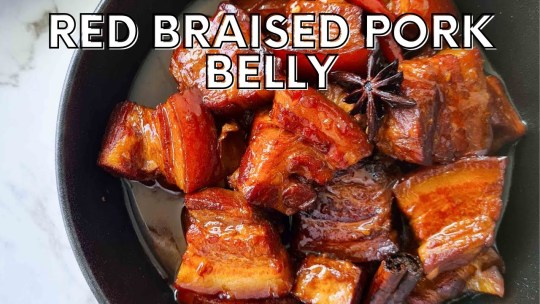
#non-enzymatic browning#caramelization#maillard#chemistry#chemblr#chemical reactions#food science#did u know#amazing facts#pls share#stem studyblr#uni studyblr#chinese food
23 notes
·
View notes
Text
What I’ve learned through two weeks of trying to get a diet plan for fitness is that absolutely nobody, including but not limited to doctors, dieticians, and food researchers, has any idea about what they’re doing. I’m seeing studies testing commonly used calorie need estimations that say “this was only accurate for 35% of the population and even then take plus or minus 10 %” and I’m sitting here thinking that I spent 5 years studying forensic biology and if something was that inaccurate we would never fucking use it.
114 notes
·
View notes
Text
Dumb shit I learned from youtube shorts tonight: Brown rice contains noticeably more arsenic than white rice.
And people were using this fact to try and sound scary.
Except.
And my god please note the except.
That doesn't actually mean sweet fuckall in 1) how much arsenic is contained in EITHER rice.
AND ALSO IF IT FUCKING MATTERS IN THE LONG RUN.
If I may give you a crash course in fuckery: If someone is talking a big game about a food being BAD because "WELL IT HAS A BAD THING" but a quick google does not actually turn up any information that proves the "bad thing" is truly "bad"? That's grifters grifting.
Here's an abstract (the thing that tells you the bare bones of the study results) from a study:
Brown rice has been advocated for as a healthier alternative to white rice. However, the concentration of arsenic and other pesticide contaminants is greater in brown rice than in white. The potential health risks and benefits of consuming more brown rice than white rice remain unclear; thus, mainstream nutritional messaging should not advocate for brown rice over white rice. This mini-review aims to summarize the most salient concepts related to dietary arsenic exposure with emphasis on more recent findings and provide consumers with evidence of both risks and benefits of consuming more brown rice than white rice. Despite risk-benefit assessments being a challenging new frontier in nutrition, researchers should pursue an assessment to validate findings and solidify evidence. In the interim, consumers should be cognizant that the dose of arsenic exposure determines its toxicity, and brown rice contains a greater concentration of arsenic than white rice.
From info later in the article: Arsenic as an idea is bad. But arsenic is also environmental. It's literally fucking everywhere. Arsenic in food is a worldwide thing.
From other info in the article: Our testing on why brown rice is better or worse than any other rice has some serious fuckboy testing vibes, and any negatives can't be directly related to arsenic.
In cases like this, I tend to rely on the following incredibly casual metric to decide where I land: If this thing you're claiming is bad for all of us was actually bad for all of us, the science would show it. While there are fuckboy techniques in testing the advantages of brown rice versus others, if brown rice was causing people serious medical issues because the arsenic levels were bad in general, that would be very obvious from any level of review.
Even with the fuckboy test questions about brown rice, if the problem was that the level of arsenic was harming people, we would see it in the available testing.
To say "brown rice has arsenic, so it's bad" is bullshit. It's like saying "If you drink at all, your liver will fail."
#science#food science#a reminder that dietician is a protected term#all other forms of food-doctor are horseshit
10 notes
·
View notes
Text


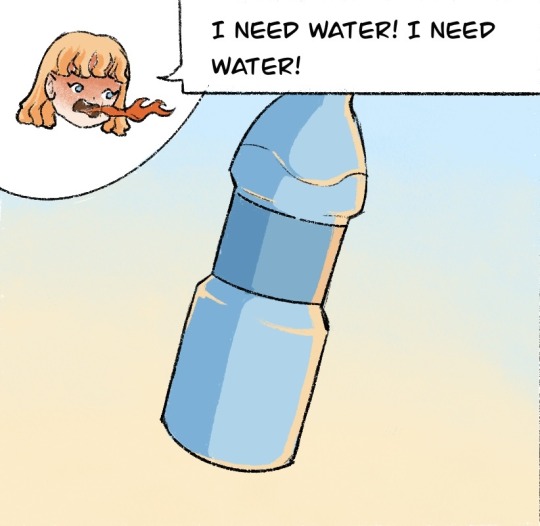



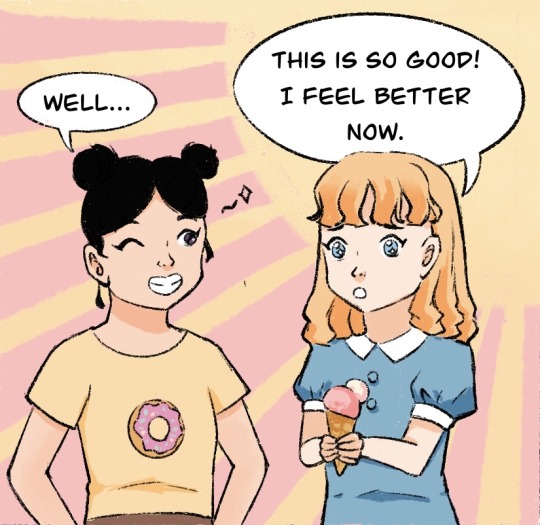
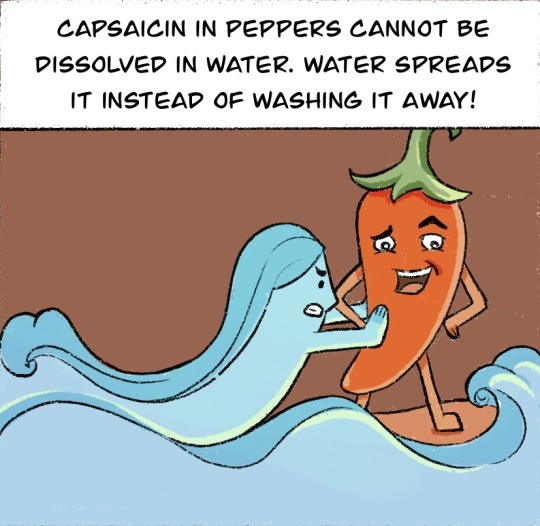
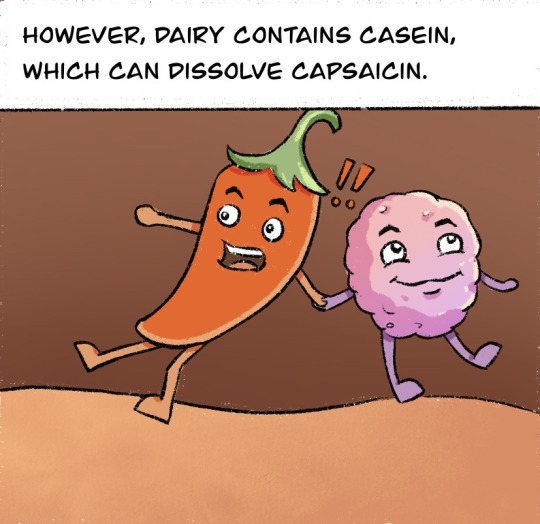
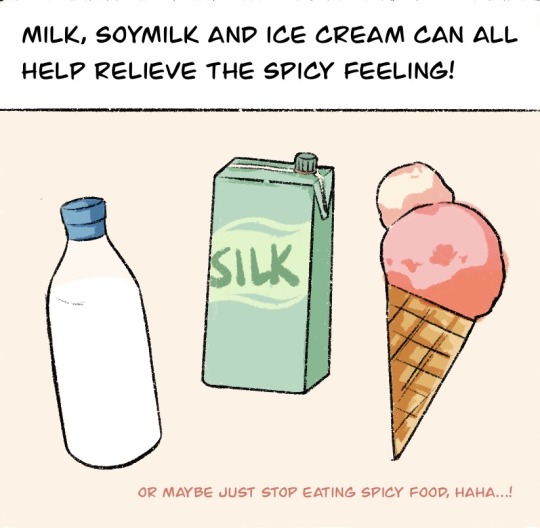
Drinking water after eating spicy food might not be the best solution…🔥
#sciart#cute illustration#sciencecommunication#science#chemistry#food art#cute comics#comics#food science#food illustration#biology#spicy food#stem education#science comics#biochemistry
150 notes
·
View notes
Text

Funguary Week 3: Edible, Dotted Stem Bolete
A theme has emerged this month: mushroom scientists! Dot here is a food scientist who can't wait to tell you about how this lovely red mushroom is blue and black inside and you must cook it for a good long time or it will upset your stomach!
I have finally done it, I've married my "old" style with the style that emerged from Huevember! Very excited for this development.
I just really love this mushroom I knew what I wanted to do with it right away. The colors are just so gorgeous!!!
#funguary#funguary2024#dotted stem bolete#women in stem#artists on tumblr#digital art#food science#edible mushrooms
8 notes
·
View notes
Text
friendly reminder to my homies to always, always research and find credible sources to your information... was looking up food PH values today (this legit helps manage my intense GERD by eating more appropriate alkaline/basic PH foods) and one of the fuckin articles had lemons and limes listed as alkaline............. bro.........................
lemons and limes are so low on the PH scale they are incredibly acidic and I just. know this. its called CITRIC ACID for a reason... my god
thankfully I found a really helpful medical journal that did a surface level PH test of common foods & ingredients and it's really dope. will absolutely help me plan my nutrition better while keeping my acid vomit at bay
^ pdf for anyone wondering and also looking into alkaline foods to balance chronic GERD ^
(also the higher a foods PH is, the more alkaline it is aka it will assist with neutralizing GERD / acid reflux. generally, aim for foods with a base PH of 5.0 or higher)
#barking into the void#I hate that. food science has been overshadowed by diet culture and weight loss obsessions... it's obscene.#food science should ALWAYS be about nutrition and balance. fuck ppl flooding my research results with UNGHHHH ALKALINE DIET DETOX MGHHUGHH#shut. UP.#I have a frothing bilious hatred for diet culture and fake science masquerading as ''''health'''''#food science
6 notes
·
View notes
Link
A study published recently in The American Journal of Clinical Nutrition by researchers from King's College London and the Quadram Institute looked at the effects of replacing regular wheat flour with 'cellular chickpea flour' on feelings of fullness, fullness-regulating hormones, insulin and blood sugar levels in people who ate it.
The study is the first of its kind and is based on the design of a new pulse ingredient that is now being commercialized for food industry use as PulseON by Pulseon Foods Ltd.
Eating healthy pulses including chickpeas, lentils and beans is known to help support healthy weight maintenance and decrease the risk of heart disease. A lot of the benefits seen from these foods are due to the fiber structure of the pulses themselves, with normal flour milling generally considered to reduce the beneficial effects of fiber structure.
However, new methods in food technology developed by the scientists have allowed them to make whole cell flours that preserve the dietary fiber structure of the whole pulses, providing a new way to enrich flour-based food with beneficial nutritional qualities for improved health.
Continue Reading
385 notes
·
View notes
Photo

Pear illustrations from Pomologia : dat is, beschryvingen en afbeeldingen van de beste soorten van appels en peeren, welke in Neder- en Hoog-Duitsland, Frankryk, Engelland en elders geagt zyn, en tot dien einde gecultiveert worden. Johann Hermann Knoop. 1758. https://newcatalog.library.cornell.edu/catalog/357585
#fruit#fruits#pear#pears#fruit culture#fruit illustration#fruit textbook#pear illustration#vintage textbook#vintage graphic#vintage illustration#1700's art#horticulture#botany#plant science#food science#food#pear tree#apples#pomologia#german book#german textbook
150 notes
·
View notes
